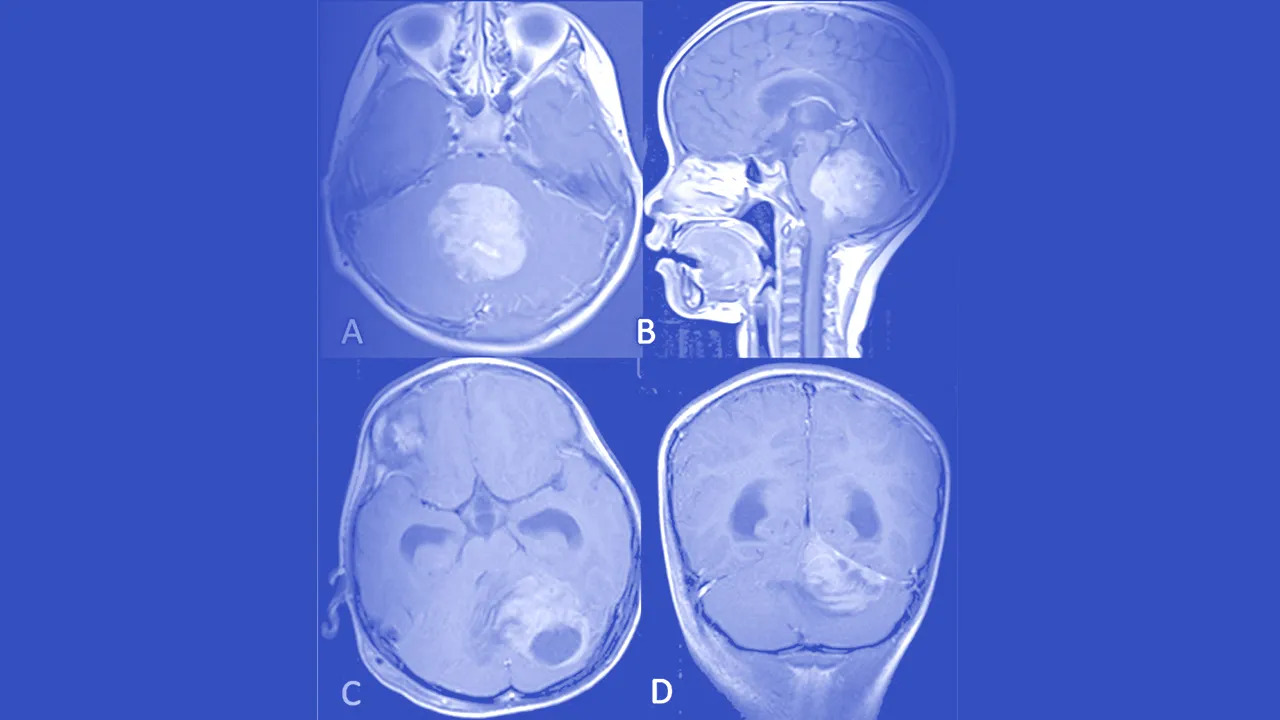Medulloblastoma is a type of brain tumor that primarily affects children. It starts in the lower back part of the brain called the cerebellum, which is responsible for coordinating movement and balance.
Medulloblastomas are classified as a type of embryonal tumor, meaning they arise from embryonic cells that didn’t develop normally.
These tumors can cause various symptoms depending on their size and location, including headaches, nausea, vomiting, problems with coordination and balance, vision changes, and even seizures.
Treatment for medulloblastoma usually involves a combination of surgery, radiation therapy, and chemotherapy. Surgery aims to remove as much of the tumor as possible without causing damage to surrounding brain tissue. After surgery, radiation therapy is often used to target any remaining cancer cells. Chemotherapy may also be administered to destroy cancer cells further or reduce the recurrence risk.
Due to advances in treatment options, survival rates for medulloblastoma have improved over the years. However, the prognosis can vary depending on the patient’s age, the tumor’s size, location, and specific genetic mutations.
Research efforts are ongoing to understand the underlying causes of medulloblastoma better and develop more effective treatments. Additionally, supportive care and rehabilitation play crucial roles in helping patients manage the side effects of treatment and improve their quality of life.
Medulloblastoma is a brain tumor classified as a type of embryonal tumor that affects children. It starts in the lower back part of the brain called the cerebellum, presents with headaches, nausea, vomiting, problems with coordination and balance, vision changes, and even seizures. Treatment involves surgery, radio and chemotherapy.

Comments are closed.